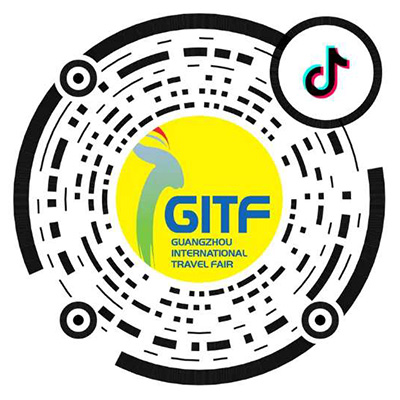
Forum Review丨AI Empowered Cultural & Tourism--Insights from Tech Enabling Cultural & Tourism (TECT) Forum
2024-06-20
Forward-thinking and cutting-edge perspectives have always been integral to the DNA of the Guangzhou International Travel Fair (GITF). As the longest-running international travel fair in China, its forums have consistently been trendsetters in the industry. Back in 2021, the inaugural "Tech Enabling Culture & Tourism (TECT)" Forum, themed "Breaking Boundaries and Reconstruction," explored the development of the culture and tourism industry empowered by technology. At that time, the deep integration of technology and tourism was just beginning. Few could have anticipated the rapid advancements in technology and the sudden onset of the AI era within just a few years.
On May 16, 2024, the "Embrace AI, Connect the Future" -- Tech Enabling Culture & Tourism (TECT) Forum 2024 was successfully held. Continuing its tradition of forward-thinking, this year's forum focused on the hot topic of "AI + Cultural Tourism." With "new quality productivity" becoming a buzzword this year, accelerating the development of artificial intelligence to activate new quality productivity has become a focal point of public concern.
What did the experts and industry leaders discuss at this forum on the opening day of the GITF? What new industry insights were revealed? Let's take a closer look!
01 Curator's Insight
Qiqun Zhou
Director of IPSOS China Consumer Technology Research Institute
"Artificial intelligence is fundamentally a paradigm revolution, and all integrations will unleash immense industry growth potential."
As the curator of TECT Forum, Qiqun Zhou, Director of IPSOS China Consumer Technology Research Institute, kicked off this year's forum with a keynote titled "The Application and Development of AI in Cultural Tourism Scenarios." He reflected on the insights gained from the forums held over the past three years. Zhou highlighted the increasingly close integration of technology and the cultural tourism industry under the "14th Five-Year Plan for Cultural and Tourism Development." He stated, "As our national economic level stands out globally, the need to build a culturally strong nation and establish cultural confidence has become a main theme. In this process, the cultural tourism industry has witnessed significant growth. Facing the opportunity of technological leaps, we see both a need and a responsibility to co-create a forum that empowers cultural tourism through technology." Zhou noted that this year's theme, "Embrace AI, Connect the Future," was timely, coinciding with a major technological breakthrough—the launch of OpenAI's GPT-4 just two days before the forum, promising profound impacts on the tech industry.
Zhou reviewed the themes of the previous two forums and said that this year's TECT Forum from the content to the topic had a stronger articulation or extension, with five key features of this year's forum:
- Keynote Speeches: This year’s speakers were all from tech companies, aiming to present real-world successful applications of technology in the industry.
- TECT Themed Exhibition Zone.
- Themed Reports: Continuing the tradition of compiling these cases into reports for sharing.
- On-Site Interactions: Inviting guests from scenic spots and cultural venues to interact with tech experts, addressing industry needs.
- TECT Visits the Guangzhou Art Museum: Led by Qipu Technology, bringing tech companies into museum operations to explore potential synergies.
At this year's forum, the "Embrace AI, Connect the Future" TECT 2024 Thematic Report was released, co-authored by Qipu Intelligent Technology, IPSOS China Consumer Technology Research Institute, and Hannover Milano Fairs Shanghai Ltd. Through the perspective of science and technology, this report delved into the cross-border interpretation of the background and significance, top-level design and outlook, and policy support of "artificial intelligence + culture and tourism". Combined with practical cases, analyzed the six directions of development of AI in the cultural and tourism industry. Interpretation of the latest application cases from home and abroad, discussing the new industry, new game, new scene and new marketing brought by AI to the cultural tourism industry. Zhou introduced the report, stating, "AI is fundamentally a paradigm revolution. All integrations are more than the sum of their parts. When digital-native consumers meet the paradigm revolution of AI, it sparks immense industry growth potential, far beyond simple physical addition." The cultural tourism industry needs to embrace this change more actively, and with the help of advanced AI technology, break through traditional perceptions and patterns to create richer and more diverse experiences.
02 Speaker's Insight
Bo Zhang
Co-founder, Vice President, and Head of Cultural Tourism Division at New Vision Ventures
"We are not a digital collection company; we aim to be guardians and transmitters of Chinese civilization."
We see ourselves as both a technology company and a cultural entity, as well as a commercial institution and a research body. Our self-assigned role is to act as guardians and transmitters of Chinese civilization, emphasizing cultural and social value in all our endeavors, beyond mere commercial gains. Throughout this journey, we have assisted numerous large corporations and institutions in realizing their social value and contributing to the preservation of cultural heritage.
Our explorations have involved working with government cultural institutions on traditional digitization projects and serving industries such as education, cultural tourism, and cultural creativity. In this process, we established a data standard called CHIM (Cultural Heritage Information Model), marking a critical step from cultural heritage to cultural assets. For example, with support from Tencent, we developed the "Global Oracle Bone Inscriptions Revitalization" mini program. This initiative involved extensive work using the CHIM format to integrate original oracle bone photographs, rubbings, micro-trace technologies, and a database of over 1.4 million oracle bone characters. These characters, which can appear on different bone fragments, are identified and matched using advanced AI technology. The primary application supporting this project is "Counting Stones into Gold." This year, we digitally restored an important relic on Beijing's central axis—Emperor Qianlong Tablet at Yandun. This allows the public to see, understand, and appreciate this cultural artifact.
The basic logic of cultural relic revitalization starts with the artifact itself, moves on to revitalizing the text, then excavating its deeper meaning, revitalizing the culture, and ultimately revitalizing the ecosystem. This aligns with the national requirements for the protection, research, inheritance, and application of cultural relics.
Tianxing He
Vice President of EHang
"We believe the low-altitude economy market will reach 5 trillion yuan by 2035 without a doubt."
The low-altitude economy is currently booming. According to official data released this year, the scale of China's low-altitude economy is expected to reach 3.5 trillion yuan by 2035. We believe it can reach 5 trillion yuan by then. This value partly stems from the entire cultural tourism market, including low-altitude tours, urban sightseeing, smart tourism, and other related sectors. Since last year, the industries related to the low-altitude economy, including aviation, tourism, logistics, helicopters, unmanned aerial vehicles, aircraft and entertainment flying industries, have seen significant growth. In 2024, the number of companies in these industries will continue to grow substantially, attracting significant investment and interest. Many entrepreneurs and companies are pivoting toward this direction, presenting a substantial industrial opportunity.
Recently, on March 18, an unmanned aerial vehicle obtained three certifications and was launched on Taobao, garnering over 1.2 billion views across the internet. It was also the first time we felt the attention of the low-altitude economy from normalization to daily consumption, with the launch of two flagship products, including the two most core products in the field of low-altitude transportation and travel in the cultural and tourism industry. EHang was founded in 2014, when the concept of low-altitude economy did not exist. EHang is a small business, but we embrace a big world. Our future focus on "fully automated and unmanned" solutions, and aims to provide new transportation modes. These solutions will be widely implemented in urban settings, cultural tourism attractions, and specialized venues and sites.
Weijie Wu
Vice President of Zhipu AI
" The AI 2.0 era is a time of inclusiveness and equality."
Since the release of Chat GPT in December 2022, terms like large models, artificial intelligence, and AI have become part of everyone's daily vocabulary. Between 2023 and 2024, we've observed a tenfold or even higher increase in the demand for large model applications across various industries, including cultural tourism. Our clients' main needs are twofold: first, reducing costs and increasing efficiency through front-end marketing and back-end customer service by replacing basic human tasks, achieving response rates of 98 - 99% or higher. Second, catering to the needs of the cultural tourism sector, we aim to create new products that can break industry barriers.
The AI 2.0 era is characterized by inclusiveness and equality, allowing us to understand unstructured data and delve into knowledge graphs. Today, we are focusing on innovation and exploration in the AI 2.0 era.
Over the past year, we have explored and summarized our findings in the cultural tourism industry. Our solutions and success stories primarily revolve around two areas: visitor services and internal operations. For instance, intelligent customer service is one of the most fundamental and common applications of large models, applicable not only to scenic spots but also to virtually all enterprises. Another example is public opinion monitoring, which involves analyzing feedback on third-party platforms or proprietary mini programs, helping scenic spots and hotels make quick business decisions.
Honggang Li
Founder of Xuanmi Technology
"In the future, we hope to place algorithms on the cloud, allowing everyone to create their own digital humans performances directly from their phones."
For the past four or five years, we've been focusing on the sports sector, applying 3D digital human technology in professional sports. Recently, we've started to expand our services to include public sports, fitness for all, and digital human reconstruction.
We categorize digital humans into different segments, including digital human-driven motion games, interaction and motion sensing, sports event broadcasting, competitive sports training, talent selection, public fitness, and smart venues. The single-camera application is closely related to cultural tourism, as it can be used for motion sensing games, interactive experiences, sports-related activities, fitness scenarios, and digital performances. With everyone having a single-camera on their phones, we envision a future where this algorithm is cloud-based, enabling users to create their own digital humans performances easily.
Currently, digitizing the human body using a single camera is technically feasible. Our goal is to identify numerous practical applications, including large language models, to address specific issues in production and everyday life. In the cultural tourism industry, it is crucial to create a deep emotional connection between people, the environment, and the objects they interact with. This connection can be sustained and converted into revenue. To achieve this, we need to deepen our understanding of individuals, participants, and performers through digital means. This concept holds immense potential, and we encourage our peers in the cultural tourism industry to think creatively about how to implement these meaningful technologies.
Weixin Wu
General Manager of Marketing, Kuangheng Technology
"AI + Cultural Tourism will span the entire digital chain, leading to a series of new applications."
Our primary focus is on providing comprehensive computational power cluster solutions within the AI ecosystem. As the cultural tourism industry embraces AI, what are the computational power demands and development trends in this fully digital chain?
Currently, humanity is experiencing an AI revolution, also known as the cognitive revolution. Large AI models are drastically reducing the cost of acquiring knowledge. For instance, by consulting an AI assistant with your questions, you can quickly obtain the answers you seek. Today, digital transformation for enterprises is essentially AI transformation. In the cultural tourism, we can start from the whole architecture of AI + cultural tourism, from the basic computational power to the landing application. The infrastructure layer includes basic computational power facilities, AI development platforms, atomic algorithmic capabilities, data and big data, and in the middle is the capability layer, the big model, and text-generated picture.
AI + Cultural Tourism will permeate the entire digital chain, generating a series of new applications, which I categorize into three stages: the promotional stage, the travel and ticketing stage, and the on-site tourism stage. How does AI specifically empower these stages?
1.Promotional Stage: AI-generated content (AIGC) enhances marketing and communication. 2.Travel and Ticketing Stage: AI ensures seamless experiences in retail, gaming, e-commerce, online media, social media, aviation, travel, and education, facilitating smooth ticket purchases and enhancing the overall travel experience. 3.On-Site Tourism Stage: Digital humans can act as museum guides, interacting with visitors and explaining the historical significance of artifacts. AI combined with the metaverse can create innovative cultural tourism experiences, accelerating the development of virtual museums and enabling entirely new virtual experiences through advanced technology.
03 Roundtable Discussion
After the speaker presentations, a roundtable discussion was held featuring Qiqun Zhou, Director of IPSOS China Consumer Technology Research Institute; Tianxing He, Vice President of EHang; Weijie Wu, Vice President of Zhipu AI; and Ying Zhao, Founder and CEO of Chun-Ji Media Shanghai. The discussion delved into the opportunities for digitization and smart technologies within the cultural tourism industry.
Qiqun Zhou said, the essence of the cultural tourism industry lies in consumer service. When dealing with scenic spot, the key question is how we can deliver emotional value to our consumers. This emotional value is crucial for the industry's contribution: "Our experiences always have room for improvement, and this is the broader context of today's forum."
Tianxing He said that the core value of the digital cultural tourism industry is how to introduce new elements, but culture is ancient, and tourism is even older, so we still have to return to emotional value. He gave an example, many people say that aerial tours are not new, and aerial cultural tourism projects are not new either, but from the perspective of the enterprise, what they hope to bring is the emotional value of the scenic spot operation, including safety value, cost-effective value, fun value, and low-cost value provided by the operator: "How do we mobilize new emotional value? How do we equip digital and intelligent wings to cultural tourism? This is the core value."
Weijie Wu believed that technology should not make people lazier but should act as a travel companion, available before, during, and after trips. Tourists should focus solely on their experiences, while technology enhances operational efficiency for attractions, thus improving the overall visitor experience.
During the discussion, all roundtable participants acknowledged the role of technology in reducing costs, improving efficiency, and enhancing consumer experiences in the cultural tourism industry. Digital marketing could offer an engaging experience for scenic spots or cultural and museum venues visitors, increasing their perception and satisfaction. Ying Zhao mentioned that future enterprises and attractions should develop their own virtual personas and digital IPs. With numerous digital IPs available, personalization and uniqueness are essential for engaging audiences.
The roundtable discussion also shed light on new perspectives for integrating cultural tourism with technology. Qiqun Zhou remarked, "The future holds limitless possibilities. For the greatest value to be realized, there must be a collaborative effort between technology providers and the tourism sector." Tianxing He believed that if you wanted to make big money in the next five years, you need to focus on the low-altitude sector. Weijie Wu emphasized that within the next three years, scenic spots should leverage artificial intelligence and large models to enhance their services. By using these advanced technologies, attractions could offer additional value and improved experiences to visitors. Ying Zhao proposed that within the coming year, there should be an effort to integrate various technological capabilities to empower scenic spots. I hoped that by next year, we would see a practical example of a virtual tour guide being implemented.
04 Match Making
This forum also specially set up the match making between cultural and tourism enterprises and technology enterprises, to provide more practical and effective digital service resources for major scenic spots and cultural and tourism enterprises, and further promote the development of the deep integration of digital science and technology and cultural and tourism.
Guangzhou Zoo, Baiyun Mountain Scenic Spot Administration, Guangdong Folk Crafts Museum (Chen Clan Academy), Chimelong Tourism Resort, South China Botanical Garden of Chinese Academy of Sciences, Guangzhou Star Cruise, Canton Tower Tourism and Cultural Development Company Limited, Yuexiu Park of Guangzhou, Guangzhou Museum, Sun Yat-sen Memorial Hall of Guangzhou, Guangdong Museum of Revolutionary History, Guangzhou Sunac Literary and Tourism City, Guangzhou Water Expo Park, Museum of the Nanye King, Peasant Movement Institute and nearly 100 scenic spots and museums participated in the match making. The atmosphere of on-site exchange was warm, and many cultural and tourism enterprises showed great interest in the practical application of digital science and technology and the intention of cooperation.
05 Walk into the Museum
In addition, TECT Forum also went into Guangzhou Art Museum. In-depth understanding of actual user needs and pain points, and users collide with more sparks of thought, so that AI technology down the altar, closer to the user, for more consumers, but also to create more business opportunities for cooperation.
06 TECT Theme Zone
This year, GITF continued to expand the scale of the TECT Zone, covering an area of 300 square meters, showcasing the latest technology-enabled cultural tourism cases and achievements, including AMD, Qipu Intelligent Technology, Yuanjing Information Technology, Jieli Interactive, Puyou Xiangzhi System, Chun-Ji Culture, and Dance Animation, etc. The exhibitors brought a variety of brand-new experiences of technological cultural tourism, attracting many visitors to stop by.
Among them, Yan Dun, an important cultural relic of Beijing's South-Central Axis, was presented in the form of a digital display. Through the micro-trace restoration technology, with visual AI enhancement, it was re-presented to the public, so that the cultural heritage of Yan Dun, the landmark of Beijing's central axis, made a wonderful appearance in the pavilion of GITF. Behind this scene is the effort of new dimension thinking together with AMD and AMD industry solution partner Kuanheng Technology, and the three parties jointly presented the latest technology and solutions for digitization of cultural relics and monuments. This case connected technology and AI applications, integrating protection, restoration, utilization and dissemination, and aroused the interest of many visitors.
Address: Room 1510, West Tower, Poly Trade Center, No.1000 Xingang East Road, Haizhu District, Guangzhou, China










